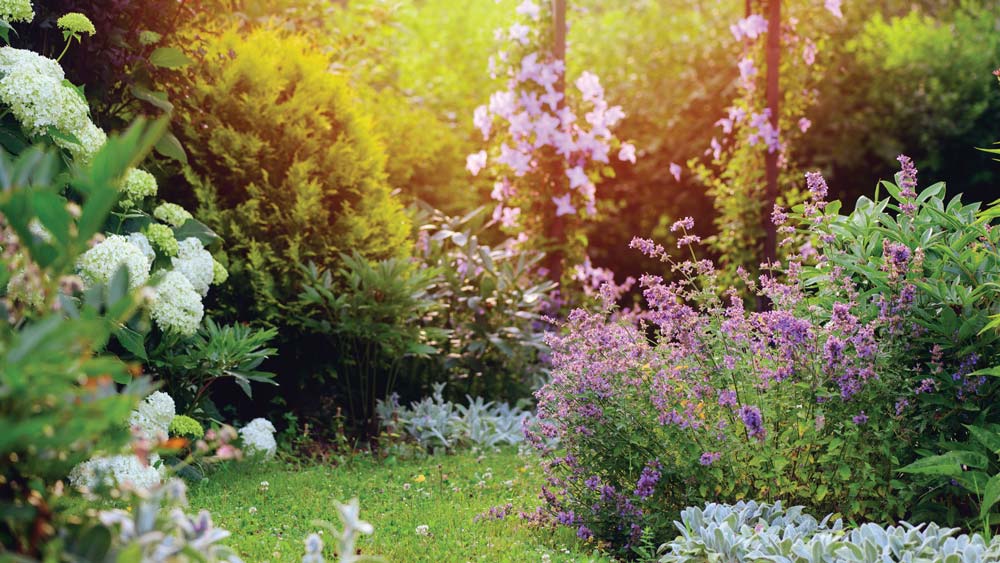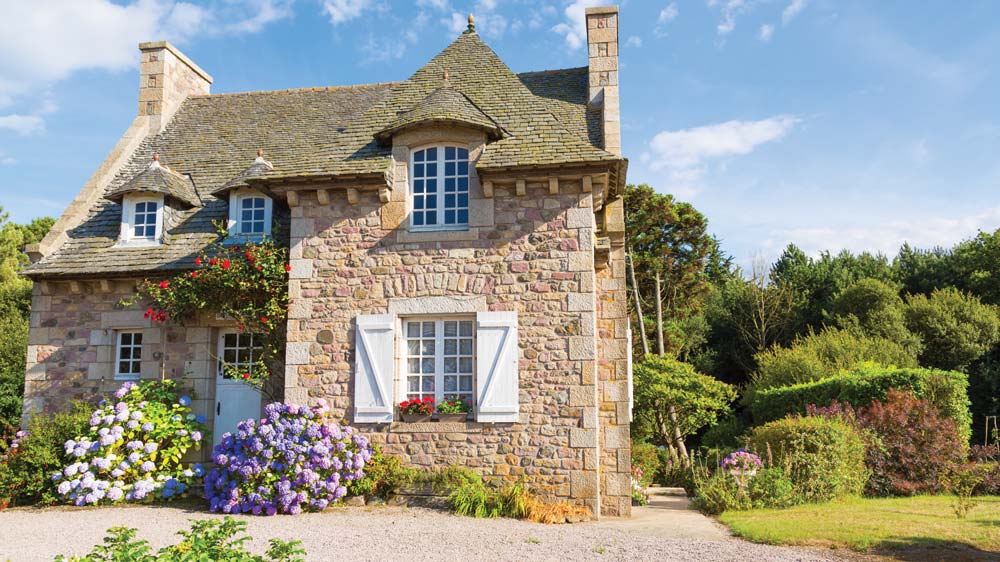
Photo: mashiki - stock.adobe.com
Rich in charm, whimsy and natural appeal — are we talking about log and timber homes? Yes, but these descriptors certainly also apply to English cottage gardens. Although there’s no authoritative definition for an English garden, there are certain repeating elements that will give it that vibe.
The following four essentials set this genre apart, and you can use them in a landscape of any size, from a small plot framing the front of a log cabin porch to a more expansive back yard that trails into the woods. Best of all, due to a heavy use of perennials and little manicuring, they’re among the easiest types of landscaping to maintain.
Plant for Density & Diversity
Unlike the more formal and often linear French style of gardening, in which plants are clustered together by type — all roses on one stretch or tidy rows of manicured boxwoods, for example — English cottage gardens tend to have a wilder look with densely planted flowers, shrubs and trees. Putting plants of varying heights and foliage types together can give your garden an informal look. Consider a mix like hydrangeas, coneflowers, ivy, peonies and lavender as a way to bring color and texture into the same space.
Create Pathways
Unless your yard is very small, winding pathways can be used to invite visitors into the garden. Since the hallmark of English gardens is a naturalistic appearance, paths should utilize organic shapes and curves rather than straight lines.
Materials should be natural as well, such as gravel, wood chips, stepping stones or grass. For example, creating a path with flat river rocks that are spaced far enough apart for grass, moss or another groundcover to grow between them will help you maintain the English-garden look while still being easy to maintain through mowing.

Define with Hedges
Even though English gardens have an untamed appearance, they do tend to employ elements like hedges for some structure.
For instance, shrubs and hedges can mark the boundaries of the garden or create small pockets of space where you can place a bench or table as a type of “room” within your garden. For this approach, choose species that won’t grow too tall, which can make those spaces feel closed in. Low-growing hedges include boxwood, laurel, honeysuckle, spirea and holly.
Include a Focal Point
Add height to your garden by including an arbor or trellis, particularly on or near a pathway, in your plan. They provide focal points and support climbing plants like wisteria, clematis or grapes. That blend of seemingly “overgrown” plants along with structures and winding paths can provide the look of an English cottage garden, no matter where your log or timber home might be in the world.
4 Classic English Garden Plants
Peony
Photo: Olga Tkacheva - stock.adobe.com
Everyone is familiar with roses and lavender, but there are less common plant varieties you can grow to get that authentic English cottage garden look. If your growing zone permits, give these a try.















